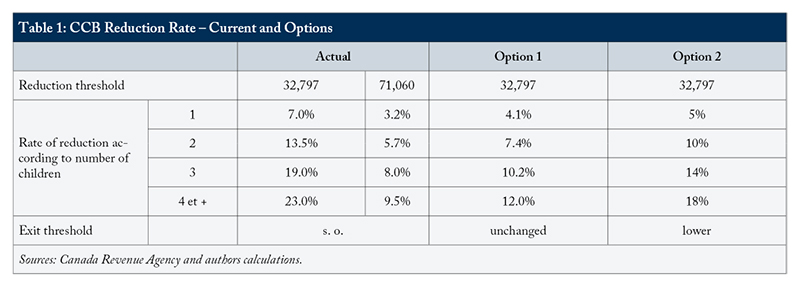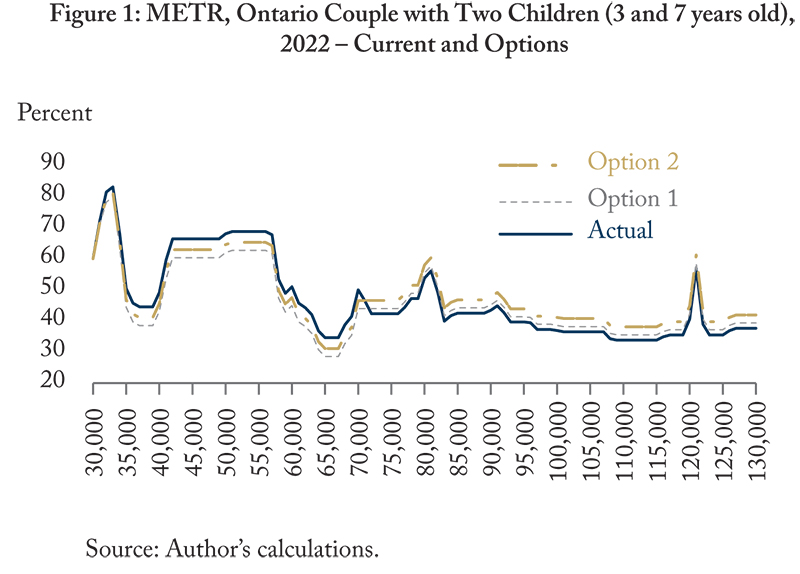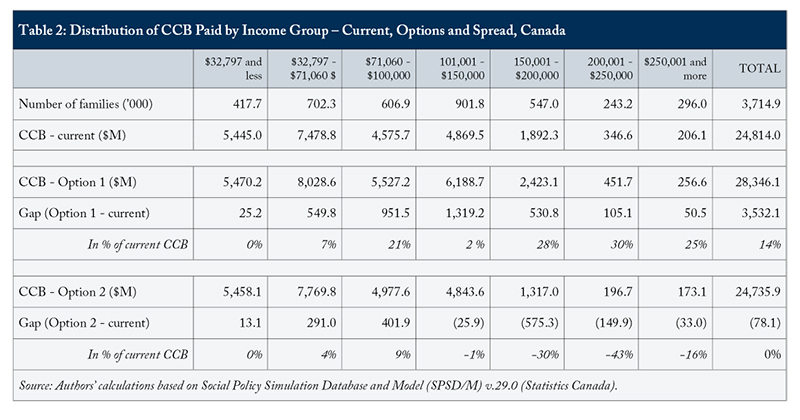From: Luc Godbout and Suzie St-Cerny
To: Chrystia Freeland, Minister of Finance
Cc: Karina Gould, Minister of Families, Children and Social Development
Date: November 1, 2022
Subject: A Dark Side to the Canada Child Benefit
Over the years, federal tax measures for children have evolved into a single benefit under the Canada Child Benefit (CCB), which is relatively generous for a large proportion of Canadian families.
CCB amounts vary according to the age and number of children and family income. It has two thresholds and eight reduction rates, which in some cases, result in a significant increase in the marginal effective tax rate (METR) for some people, which can have a negative impact on work incentives.
One recent study recently found evidence that CCB may have actually produce a labour supply disincentive.
In this context, is it possible to modify CCB parameters to make improvements to the work incentive? And if so, at what cost? How would those changes alter the value of the CCB received by families?
Four options to reduce METRs were outlined in a recent detailed CCB analysis.
The first was designed to ensure there were no losing families, and the other three model were instead designed to keep the cost of the CCB unchanged, creating create winners and losers among families.
Two of the four options, although they significantly reduced METRs for families with three or four children, succeeded less well for families with two children and not at all for one-child families. That would bring unwelcome political consequences.
So what about the other two options that keep only the first reduction threshold and four different reduction rates according to the number of children, instead of eight? These options differ in the rates chosen. In Option 1, they ensure that the exit thresholds from the CCB remain the same (threshold where CCB is reduced to zero), while in Option 2, they are chosen to ensure that the cost of the program remains unchanged, thus requiring higher rates.

With Option 1, METRs are reduced by 3, 6, 8.5 and 11 percentage points respectively depending on the number of children. However, while this option ensures that no family will see their allowance decrease, it implies an increase in the annual cost to the government of $3.5 billion in 2022 or 14 percent.
Option 2 has more modest effects on METRs. For illustrative purposes, Figure 1 shows the effect on METRs for an Ontario couple with two children. (A Quebec couple’s illustration appears in the companion Memo in French.)

Table 2 shows the current and projected distribution of the CCB based on family income. For Option 1, the largest portion of the incremental cost falls on families with incomes between $71,060 and $150,000. Under Option 2, there would be a larger CCB share for families with incomes between $32,797 and $100,000 and conversely less for those with higher incomes.

Finally, with respect to CCB variations, Option 1 allows increases of up to 25 to 30 percent depending on the number of children. Option 2 provides a maximum of 16 percent. In this case, let us remember, higher incomes reduce the CCB until it is eliminated.
It may seem too ambitious to increase the CCB program cost (Option 1). However, it should be noted that the overall cost of the program grew by 7.5 percent over five years (2017-18 to 2022-2023) even as all other transfers to persons increased by 42 percent. Thus, depending on the federal government's desire to add funds to the CCB (Option 1) or to reform it within the same budget (Option 2), other avenues can be explored.
Other recent proposals include a poverty reduction idea from Rhys Kesselman.
In the current context, however, we want to improve every incentive to work. As our labour shortages persist, every mitigation is worth considering.
Luc Godbout is Professor, School of Administration, Université de Sherbrooke; and Chair in Taxation and Public Finance and Suzie St-Cerny is a research professional, Chair in Taxation and Public Finance.
To send a comment or leave feedback, email us at blog@cdhowe.org.
The views expressed here are those of the authors. The C.D. Howe Institute does not take corporate positions on policy matters.





